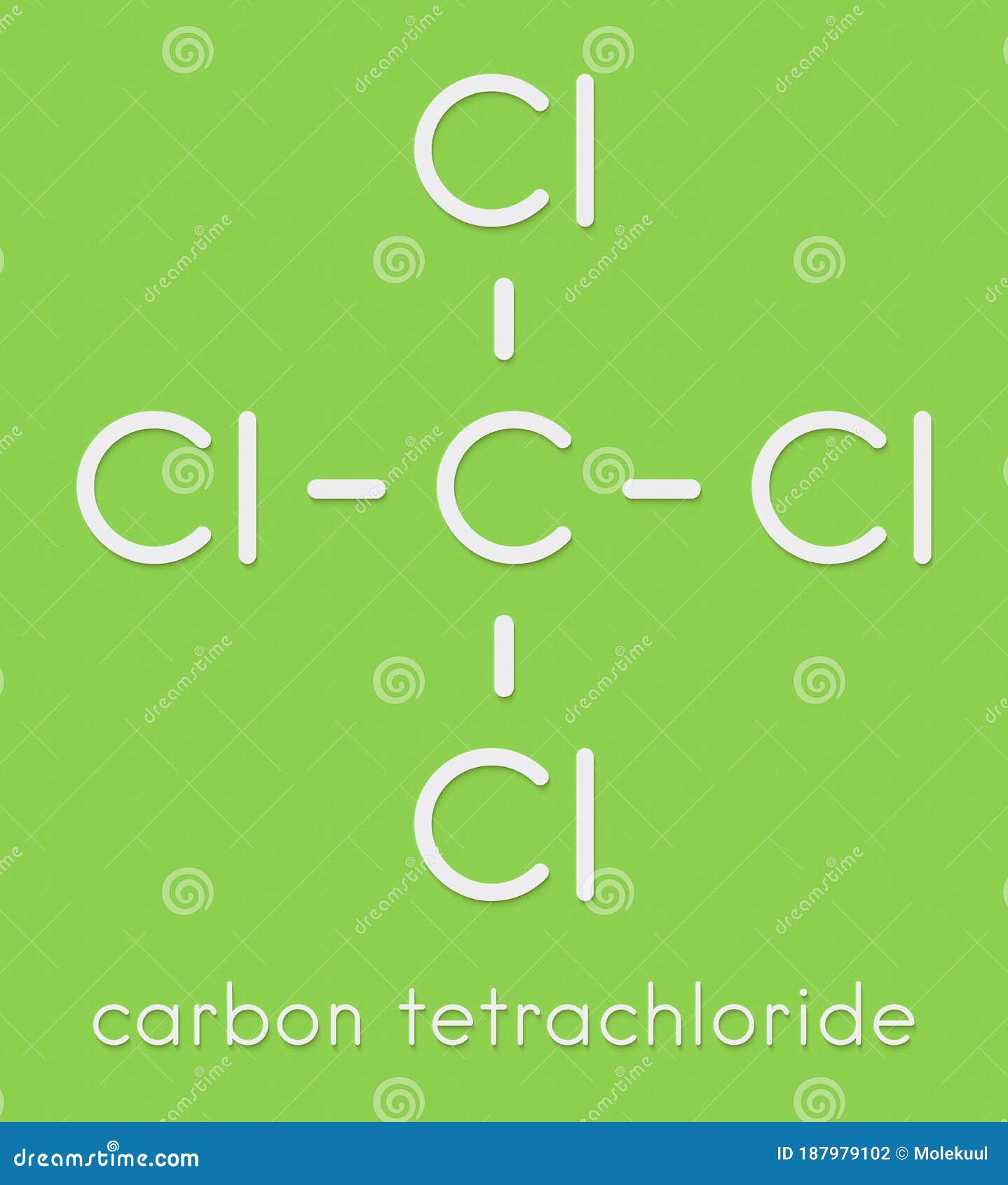

If it is superheated steam, even without the presence of metal catalyst, carbon tetrachloride can also be decomposed to produce phosgene. At 250 ℃ with the presence of water, it can react with some metals to produce carbon dioxide Upon anhydrous condition, the reaction between carbon tetrachloride and metal is very slow.Ĭarbon tetrachloride is decomposed by water in the presence of metals such as aluminum and iron (catalyzed). It chemical reactivity was inert, but being more active than chloroform. All these uses have tended to be phased-out as production has dropped (ECDIN, 1992 ATSDR, 1994).Ĭarbon tetrachloride molecule exhibits tetrahedral structure, belonging to non-polar molecule. It was previously also widely used as a cleaning agent. Most of the carbon tetrachloride produced is used in the production of CFCs, which were primarily used as refrigerants, propellants, foam-blowing agents and solvents and in the production of other chlorinated hydrocarbons.Ĭarbon tetrachloride has been used as a grain fumigant, pesticide, solvent for oils and fats, metal degreaser, fire extinguisher and flame retardant, and in the production of paint, ink, plastics, semi-conductors and petrol additives. It is mildly reactive with lead and copper and can be reduced to chloroform in the presence of zinc and an acid. It has a water solubility of 1160 mg/l and is miscible with various organic solvents.

It is toxic and forms phosgene, hydrogen chloride, and chlorine when heated. However, carbon tetrachloride, at high temperature (500 ℃ above), can react with water to produce highly toxic phosgene, so we should pay attention to ventilation for extinguishing fire.Ĭarbon tetrachloride is a clear, colorless liquid with a distinctive, sweet ether-like odor. It is especially suitable for extinguishing oil fire and fire near the power.

When the carbon tetrachloride is heat to be evaporated to become heavy steam, the gas will cover the combustion products, so that the firing product is isolated from the air and the fire is extinguished. Carbon tetrachloride is volatile with its vapor being heavier than air, being non-conductive and inflammable. Therefore, the operator should pay special attention. However, long-term exposure to carbon tetrachloride will irritate the skin, inhibit the central nervous system and cause damage to the liver and kidney. It can also be used as dry cleaning agent. It can dissolve grease, paint, resin, rubber and many other substances, being commonly used organic solvent and extractant. It appears as colorless liquid with the melting point of-23 ° C, boiling point of 76.8 ° C and the relative density of 1.5867. Pesticides Freedom of Information Act (FOIA)Ĭarbon tetrachloride, also known as tetrachloromethane, has its molecule formula being CCl4. Indirect Additives used in Food Contact Substances NIOSH REL: STEL 1 hour 2 ppm, IDLH 200 ppm OSHA PEL: TWAġ0 ppm, C 25 ppm, 5-minute/4-hour peak 200 ppm ACGIH TLV: TWA 5 ppm.

EPA, 1985), petroleumĮther, solvent naphtha, and volatile oils (Yoshida et al., 1983a).Įthereal, sweet, pungent odor detectable at 140 to 584 ppm (mean = 252 ppm)Ģ.15 at 30 ☌ (headspace-GC, Sanz et al., 1997) Miscible with ethanol, benzene, chloroform, ether, carbon disulfide (U.S.


 0 kommentar(er)
0 kommentar(er)
